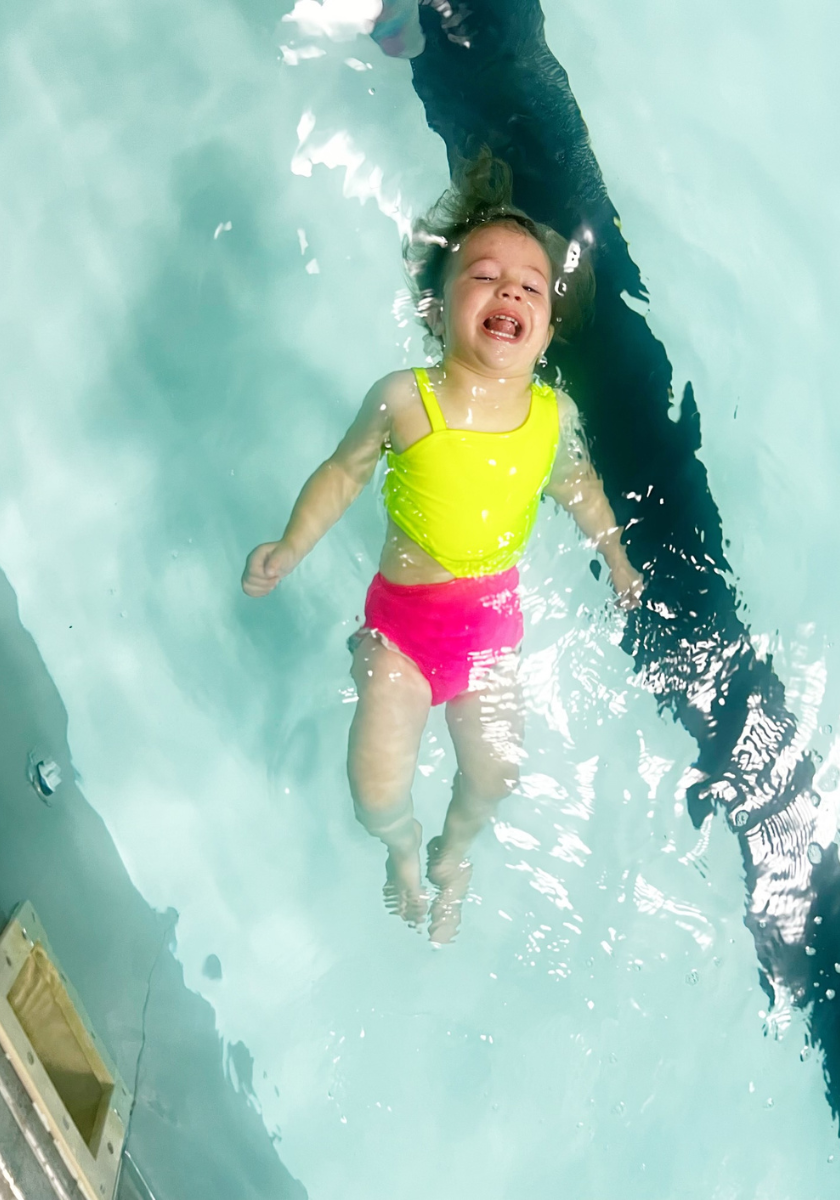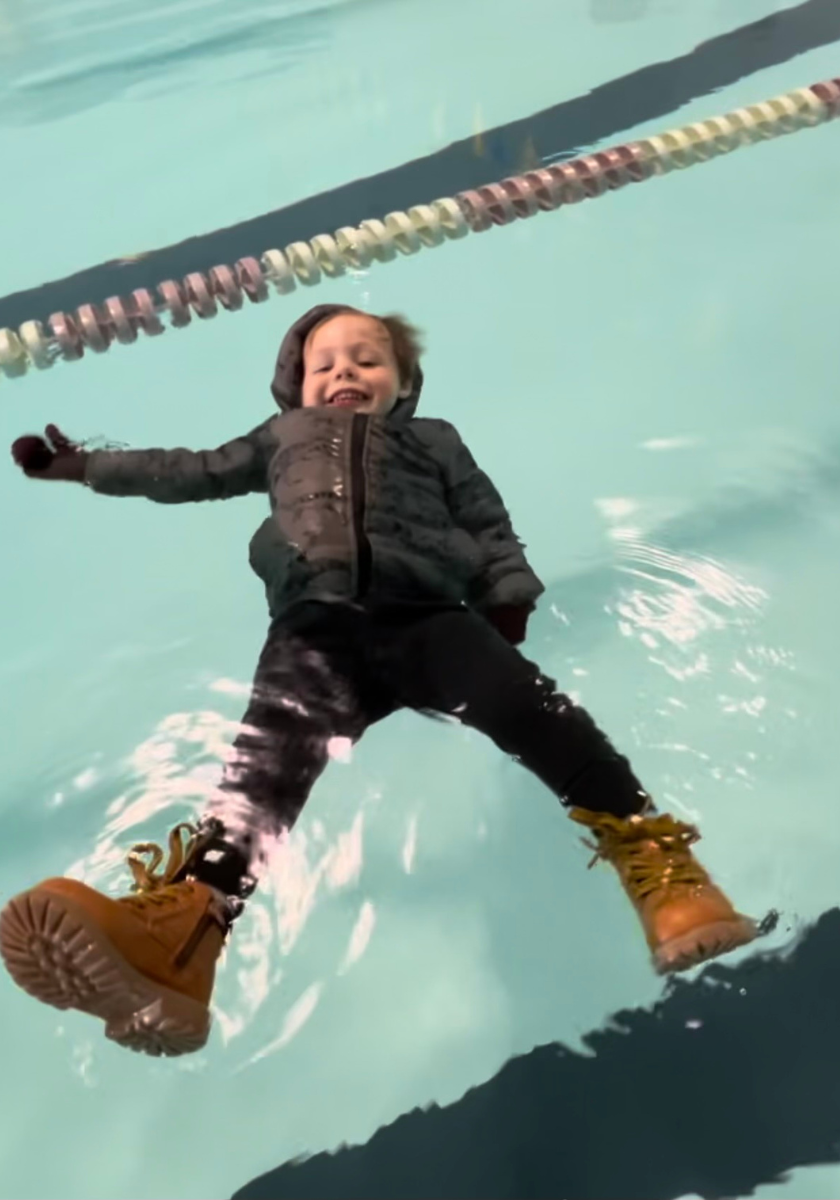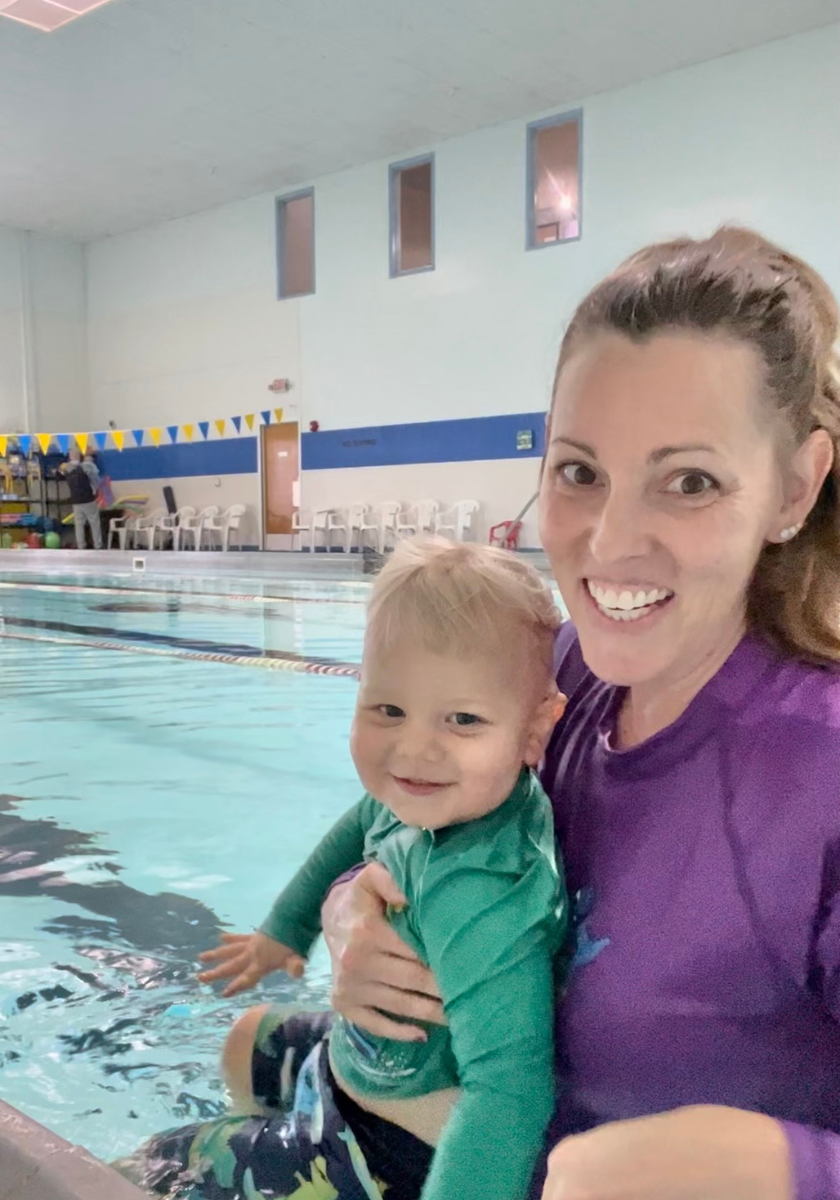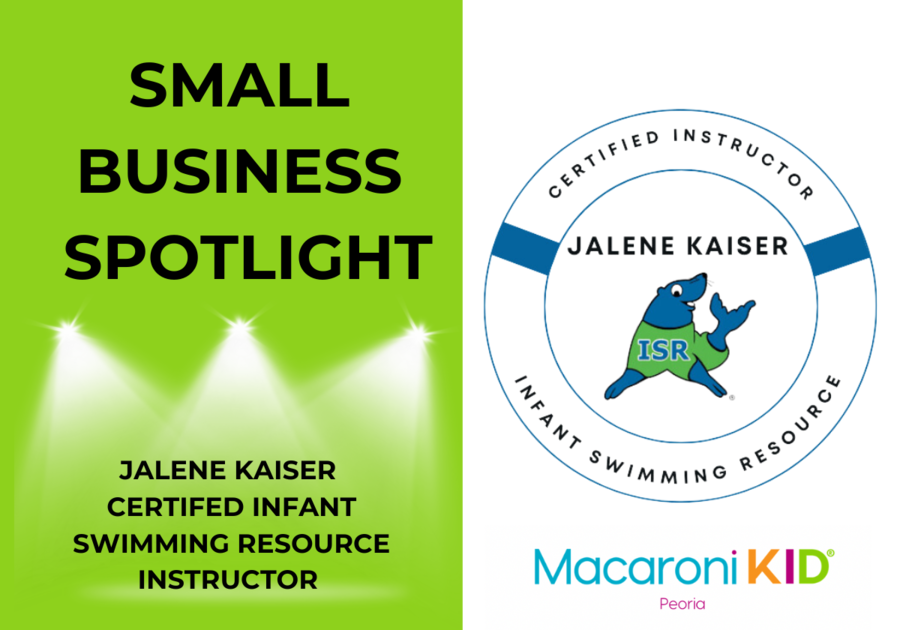We chatted with Jalene Kaiser, Peoria's Certified Infant Swimming Resource Instructor to talk about infant swimming, what it is, and why it's so important! Her October session registration and last session of 2024 is open NOW! You can read at the bottom to see how to sign up. One of you will be able to get one FREE week when you sign up for a full session. Click the image at the bottom of this article to fill out the Google Form to enter the giveaway!
Interview with Jalene Kaiser, ISR Instructor
Q: Can you describe your journey to becoming an ISR instructor? What inspired you to pursue this path?
Jalene Kaiser: As a new mom, I was constantly learning, and one shocking discovery was that drowning is the leading cause of death in children under four. I was like, "Whoa, what?" We had a pool and a camper right on the lake, and I immediately felt the need to ensure my son had the best chance not to become a statistic. I realized there was only one ISR instructor nearby, and that was a 40-minute drive. With my background in healthcare and a passion for preventative health, I wanted to change that—to make these life-saving lessons more accessible to the community. While pregnant with my second child, I researched what it would take to become certified. The timing moved quickly, and my family packed up for several weeks, road-tripping to Georgia where I got certified to become an ISR instructor!
Q: How does ISR’s approach to infant swimming differ from other swimming programs?
Jalene Kaiser: ISR Self-Rescue lessons differ from traditional swim lessons in several ways. Traditional lessons for infants typically focus on "water acclimation"—introducing children to the water with their parents and teaching them that water is fun. But teaching a child that water is fun before they know how to survive in it can be dangerous. Many people rely on pool gates, alarms, and supervision, but these measures can fail. ISR places the child at the center of drowning prevention. With ISR Self-Rescue lessons, a highly trained, certified instructor works with one child at a time, integrating basic swim instruction with survival swim training that's developmentally appropriate for young children. It’s a research-based method that's been around for nearly 55 years, teaching children to self-rescue and be safe around water.
Q: What are some common misconceptions parents have about infant survival swimming lessons, and how do you address them?
Jalene Kaiser: The biggest misconception is that I just throw the baby or child into the water. I don’t do that. Skills are taught using sensorimotor learning and positive reinforcement. It’s a gradual process, ensuring the child’s safety and comfort every step of the way.
Q: Can you walk us through a typical ISR lesson for infants and young children? What are the key components of the training?
Jalene Kaiser: For infants aged 6 to 18 months, the primary focus is on teaching them to hold their breath, roll to their back, and wait to be rescued. Older children, who are walking, learn to swim short distances, roll back to float and breathe, and then flip over to continue swimming. They repeat this sequence until they reach safety or can float until help arrives. It’s all about muscle memory—like learning to crawl or walk, with proper training and attention to safety, these skills become second nature to the child.
 |  |
Q: What specific training did you undergo to become an ISR instructor?
Jalene Kaiser: The training was very hands-on and in-depth. It took six weeks, five days a week of in-water, hands-on training, along with five days a week of theory training. It’s intense but necessary to ensure the highest level of safety and instruction.
Q: How do you ensure the safety and comfort of both the child and their parents during lessons?
Jalene Kaiser: Before each lesson, I go over a detailed questionnaire with the child’s guardian. We discuss everything from bowel habits to diet, sleep, illnesses, and recent fevers. Once the child is deemed safe to be in the water, I begin the lesson, performing a vasoconstriction (VC) test throughout to manage the child’s temperature and fatigue. ISR has several other safety protocols, and before any lesson starts, our registration evaluation team reviews each child’s medical history. It's an individualized approach with safety as the top priority.
Q: Could you share a memorable success story or a particularly challenging experience you’ve had as an ISR instructor?
Jalene Kaiser: One memorable experience happened in Florida during my 40th birthday trip. I was playing with my 2-year-old son in a baby pool, and at one point, I turned my back for a moment to pick something up. When I looked back, I heard him screaming and saw him on his back in his float position—his "starfish." My immediate instinct was to scoop him up, but I stopped myself and realized that his skills were being put to the test. I calmly walked up to him, praised him, and felt immense pride. It was a moment of clarity—seeing firsthand why this work is so important.
Q: In your opinion, what are the biggest benefits of starting survival swimming lessons at an early age?
Jalene Kaiser: The biggest benefit is giving children the best chance to survive in the water. Drowning is preventable, and these lessons can literally change the course of a child’s life. With proper maintenance and refresher courses, ISR has a retention rate of 94 to 100 percent. That’s life-changing.
 |  |
Q: What advice would you give to parents who are considering ISR lessons for their children?
Jalene Kaiser: Come watch a session, get informed, gather the facts, and set up a time to talk. I’m here to answer any questions and help you feel confident about the decision.
Q: What do typical ISR lessons look like?
Jalene Kaiser: ISR lessons are 10 minutes a day, five days a week, for about six weeks. This structure is designed for optimal learning, taking advantage of children’s short attention spans and ensuring consistent practice. Though the pool is heated, children still lose body heat during lessons, so shorter sessions help maintain their comfort.
Q: What do you find most rewarding about your role as an ISR instructor?
Jalene Kaiser: The most rewarding part is providing a layer of protection that a child can carry with them wherever they go. Drowning is preventable, and ISR gives children the best possible chance not to become a statistic.
Q: How can parents sign up with you to get their child enrolled in ISR?
Jalene Kaiser: My October session registration, which is also the last session of 2024, will go live in the first week of September. For more information, parents can email me at jalene.kaiser@infantswim.com, or call/text at 309-256-6910. More details about the overall ISR program can be found at www.infantswim.com. Remember, it takes just 20 seconds for a child to silently drown—even in shallow water.
 |




